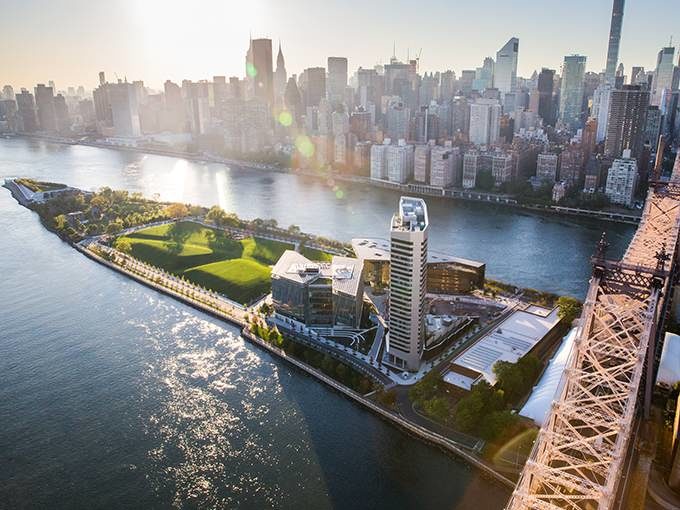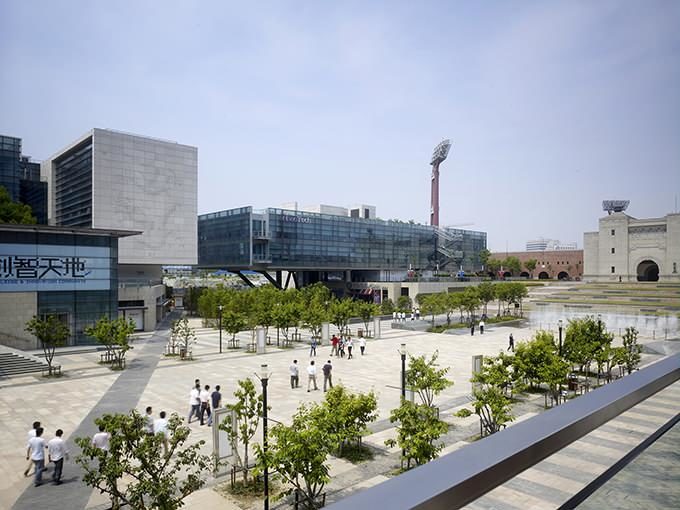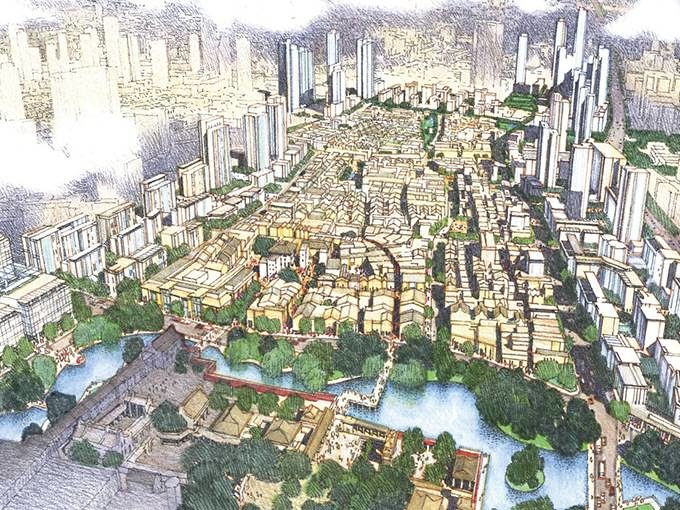



Four SOM projects have been named 2019 Global Award for Excellence winners by the Urban Land Institute (ULI). The program honors projects for responsible land use, excellence in design, marketplace acceptance, sustainability and resiliency, and community impact. In total, 11 projects were selected as winners. The four SOM projects are: the Cornell Tech Campus Framework Plan and Phase 1 Site Development; Guoco Tower; the Knowledge and Innovation Community; and the Foshan Lingnan Tiandi Master Plan.
The Cornell Tech campus plan, designed in collaboration with James Corner Field Operations, Cornell University, Technion Israel Institute of Technology, and the City of New York, is a new applied sciences university that brings together an open and collaborative community of designers, engineers, entrepreneurs, and scientists, thus blurring the boundary between the academic and commercial world. Situated on Roosevelt Island in New York City, it is designed to be an industry and economic driver, and a model for large-scale campus collaboration.
Guoco Tower is a premier business and lifestyle hub in Singapore. It includes the tallest building in the city, and is highlighted by a large public component—a “city room” featuring public art and outdoor performance areas—and an underground pedestrian network connected to the site’s existing Mass Rapid Transit station.
The Knowledge and Innovation Community is a master plan within the Yangpu District, an area that has become a major driver of Shanghai’s tech boom. Designed for formerly underutilized and dilapidated land, SOM’s master plan includes research, retail, and office space, along with cultural elements—all intended to create a vibrant community where ideas can flourish and be brought to market.
The Foshan Lingnan Tiandi Master Plan prioritizes the conservation of the Foshan Ancestral Temple and Donghuali Old Town while supporting a sustainable, modern central district equipped to accommodate future growth. The scheme, which proposes private development outside of the historic core along with building guidelines, was shaped with planners, developers, and city officials.